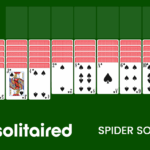Dress up games set the stage for this enthralling narrative, offering players a unique blend of creativity and expression through fashion. These games invite users to immerse themselves in various genres, from enchanting fantasy realms to historical eras and contemporary styles. With a plethora of customization options, players can unleash their imagination, crafting outfits that reflect their personal flair while engaging with a vibrant community of fellow fashion enthusiasts.
As we delve deeper, we will explore the diverse genres of dress up games, uncover the myriad customization features that keep players engaged, and highlight the social interactions that transform solitary gaming into a shared experience. Each aspect contributes to the dynamic world of dress up games, making them a captivating choice for players of all ages.
Popular Dress Up Game Genres
The world of dress up games encompasses a variety of genres, each with its own unique aesthetic, gameplay mechanics, and target audience. These genres allow players to explore different styles, time periods, and themes while engaging in creative expression through fashion. As trends in the gaming industry continue to evolve, so too do the styles and themes explored in dress up games, reflecting broader societal changes and interests.
Different genres of dress up games offer a range of experiences for players. Here are some of the most popular categories:
Genre Descriptions
Understanding the unique characteristics of each genre is essential for appreciating their appeal. Below is a comparative table that highlights the distinctive features of fantasy, historical, and modern fashion dress up games.
| Genre | Description | Gameplay Mechanics | Target Audience |
|---|---|---|---|
| Fantasy | Set in magical or mythical worlds, often featuring characters like fairies, elves, or superheroes. | Customization of outfits with fantastical elements such as wings or magical accessories. | Young teens and fantasy enthusiasts. |
| Historical | Focuses on specific time periods, allowing players to explore fashion styles from different eras. | Authentic costume options based on historical accuracy, often with educational elements. | History buffs and educators. |
| Modern Fashion | Reflects contemporary styles and trends, often influenced by real-world fashion icons. | Mixing and matching trendy outfits, with features inspired by fashion shows and magazines. | Fashion enthusiasts and social media users. |
Trends in dress up game genres have shown that players are increasingly interested in personalization and social interaction. The rise of social media has led to dress up games that allow sharing of creations online, enhancing the community aspect. Moreover, many games are beginning to incorporate elements of storytelling, where player choices impact character development and plot progression. This trend indicates a shift towards more immersive experiences, merging fashion with narrative-driven gameplay.
“Players are looking for deeper engagement, which is driving the evolution of dress up games from simple styling into more complex interactions and storytelling.”
Character Customization Options
In the vibrant world of dress up games, character customization options are essential for player engagement and creativity. These features allow players to personalize their characters, making their gaming experience unique and memorable. Every choice, from hairstyles to outfits, plays a pivotal role in how players connect with their virtual personas.
Character customization in dress up games typically includes a variety of options, enabling players to express their individuality. Here’s a closer look at the popular customization features and their effects on player interaction and enjoyment.
Popular Customization Features
The following list highlights the most sought-after character customization options in dress up games and explains their significance in enhancing player engagement:
- Hairstyles: Offering a diverse range of hairstyles allows players to reflect different personalities and styles. From long flowing locks to colorful pixie cuts, the choice of hairstyle is often one of the first decisions players make.
- Outfits: The selection of clothing—from casual wear to extravagant costumes—enables players to transform their characters dramatically. This choice can invoke various themes, such as fantasy, everyday life, or high fashion.
- Accessories: Items such as hats, glasses, jewelry, and bags add unique touches that complete a character’s look. Accessories often serve as status symbols, allowing players to showcase their taste and creativity.
- Skin Tones: A range of skin tone options promotes inclusivity and allows players to create characters that represent themselves or their desired personas.
- Makeup Options: Customizable makeup choices, including lip color and eye shadow, enable players to further enhance their character’s appearance, adding an extra layer of personalization.
- Background Settings: Some games provide the option to customize the background as well, allowing players to set the scene for their character, adding context and storytelling elements.
Each of these features can significantly impact the player experience, fostering a deeper emotional connection to the game and its characters. The ability to create a unique avatar not only enhances enjoyment but also encourages players to invest more time in the game.
Unique Systems for Character Personalization, Dress up games
Different dress up games implement diverse systems for character personalization, which can greatly affect gameplay and user satisfaction. For instance, some games may offer a straightforward selection process, while others may incorporate complex systems that allow for layered customization.
In games like “The Sims,” players can manipulate sliders to adjust physical traits such as height and body shape, creating highly personalized avatars. This granular level of control allows for a more immersive experience, as players can replicate their own appearance or explore entirely new identities.
On the other hand, a game like “Fashion Star” focuses on outfit combinations and style challenges, where players earn points for creativity and fashion sense. The customization here revolves around choosing the perfect combination of outfits and accessories to impress judges, emphasizing knowledge of trends over physical adjustments.
Many games also feature seasonal or themed updates, introducing new customization options to keep the experience fresh and engaging. For example, during Halloween, dress up games may add spooky costumes and accessories, inviting players to revisit and update their characters.
Overall, the variety of customization options available in dress up games not only enriches gameplay but also fosters a sense of community as players share their creations with others. This aspect of personalization is integral to maintaining player interest and ensuring long-term engagement.
Social Interaction in Dress Up Games
Social interaction features play a significant role in enhancing the appeal and engagement of dress up games. These elements not only foster a sense of community among players but also elevate the gaming experience by allowing users to connect, share, and compete. By integrating social features, developers can create a dynamic environment where creativity flourishes through collaboration and competition.
Dress up games often incorporate various social interaction features such as sharing outfits, creating fashion contests, and enabling player-to-player interactions. These functionalities allow players to showcase their creations and receive feedback from the community, enhancing the overall enjoyment and motivation to continue playing. Additionally, many of these games encourage players to invite friends or engage with fellow fashion enthusiasts, further solidifying a sense of belonging.
Examples of Popular Dress Up Games with Community Features
Several dress up games have successfully integrated social interaction into their gameplay mechanics. These games not only allow players to customize characters but also provide platforms for sharing and competing. The following titles exemplify this trend:
- Covet Fashion: This game allows players to participate in weekly fashion challenges where they can dress their models in various outfits. Players can vote on their favorite looks, fostering a competitive and interactive atmosphere.
- Stardoll: Stardoll offers players the chance to create unique doll avatars and design clothing. Players can interact by visiting each other’s suites, commenting on outfits, and participating in fashion shows.
- Dress Up Time Princess: This game combines storytelling with dress up mechanics. Players can share their character designs and choice of outfits within the community, creating a collaborative storytelling experience.
The incorporation of social features significantly impacts player retention and game popularity. Players are more likely to stay engaged in games that offer community-driven elements, as these features create a sense of accountability and friendly rivalry.
“Social interaction in dress up games fosters creativity, community, and competition, making them more engaging for players.”
These social functionalities lead to shared experiences and memories, which are vital for player loyalty. A thriving community motivates players to return regularly, not just to advance in the game but to stay connected with friends and fellow fashion enthusiasts. Games like Covet Fashion and Stardoll have shown that robust social mechanics can transform casual players into dedicated participants, thereby enhancing the overall longevity and success of the game.
If you’re looking for a fun way to pass the time, why not try out solitaire google ? This classic card game is not only entertaining but also a great way to sharpen your mind. Whether you’re a seasoned player or new to the game, you’ll find it easy to jump right in. Plus, it’s accessible directly through your browser, making it super convenient for a quick game anytime you need a break.
If you’re looking for a fun way to pass the time, you might want to check out solitaire google. This classic card game is not only entertaining but also a great way to sharpen your mind. You can play it directly in your browser without any downloads, making it super convenient. So, why not give it a try and see how quickly you can clear the board?

